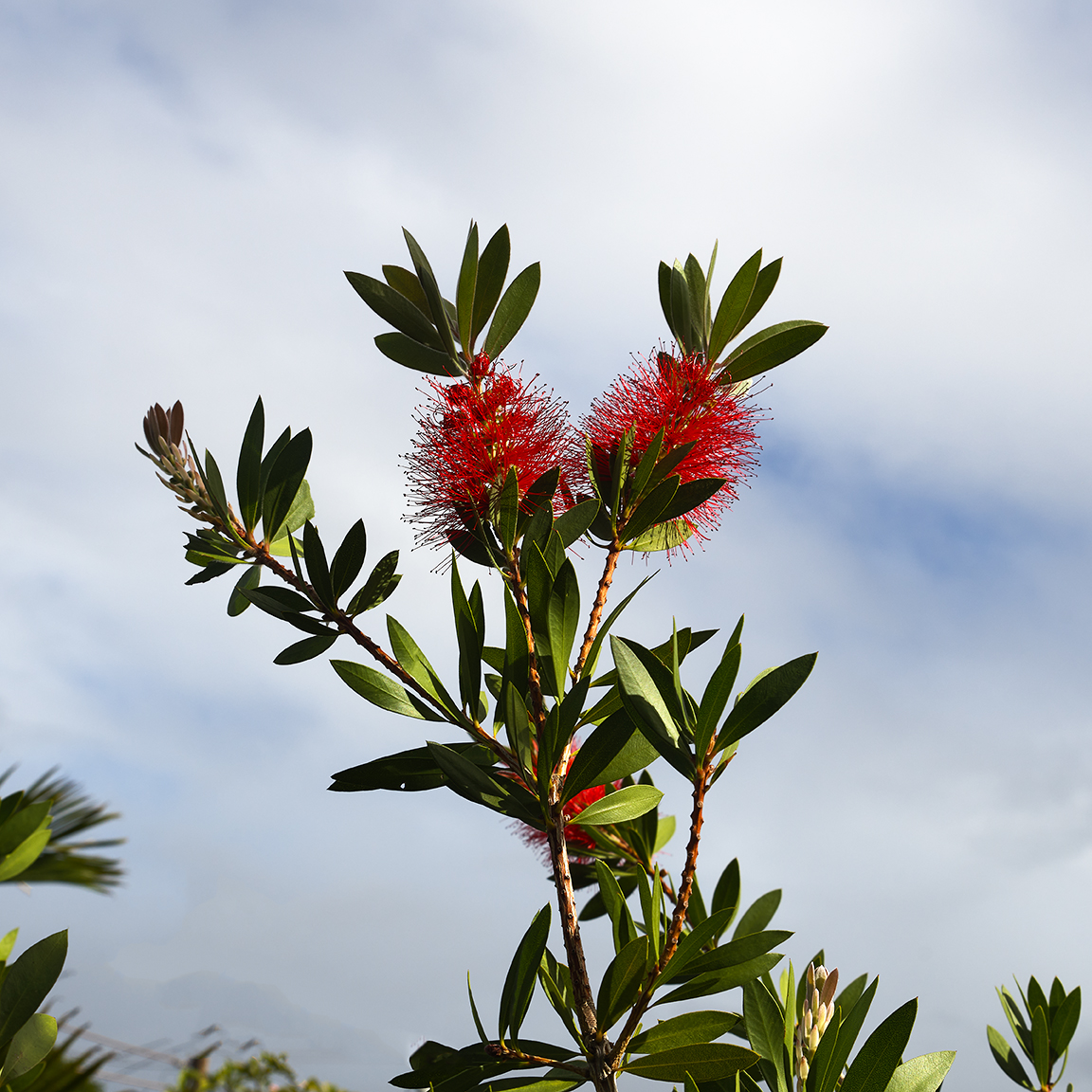The Merijo, a Wren with a White Ring around its eye and originally from Japan, has found Kauai to be a wonderful place to live and even thrive. At four inches and weighting less than 4 ounces – the tiny and astoundingly quick bird – uses the ʻōhiʻa and its lehu flower as its primary place to grab a meal (insects).
The ʻōhiʻa is a tree or bush endemic to the six main Hawaiian Islands. The ʻōhiʻa plays a major role in Hawaiian history and culture. Its lehu flower blooms in three color ranges (Yellow, Orange and Red).
The Merijo, uses its olive and yellow greenish body color to protect itself by hiding amongst the similarly colored leaves of the ʻōhiʻa. The bird only becomes fully apparent when it jumps from the tree limbs up to the lehu flower to nibble on insects.
The Lubeck’s are exceptionally fortunate that a pair of Merijo and a ʻōhiʻa tree call our yard home. Our ʻōhiʻa tree began to produce its lehu flower earlier this month.
Yesterday I decided that I would use a few late afternoons and sunrises over the next days to attempt to capture the lehu flower and the Merijo. The photos above were taken this morning at sunrise. The photo’s of the lehu flower immediately below were taken late yesterday afternoon.
The ʻōhiʻa and its lehu flower has fascinated all of my days on Kauai. As a tree or bush it can survive the sunny oceanfront in as little rain as 16 inches per year. Yet, the ʻōhiʻa can survive the high peaks of the Kōkeʻe or Alakaʻi Swamp and its 460+ average annual inches of rain.
— Jeff’s Thoughts and Other Worthless Trivia —
While the most prominent native tree in the Hawaiian Islands, the ʻōhiʻa is presently experiencing a grave threat to its very existence. Rapid ʻŌhiʻa Death has become a thing and is proving to be bad news – big time. In short, a type of fungus – new to the islands – has appeared. If infected, the ʻōhiʻa can die in as little as a few days. Unfortunately the insects that eat the fungus are also disappearing – for a different reason; an overall temperature increase in the island chain.
The shots on this page were taken hand-held with my PhaseOne IQ4-150 Digital back, and PHASEOne XF Camera.
The images of the ʻōhiʻa tree and lehue were captured with the following lenses: PhaseOne 35MM (yard), PhaseOne 110MM (Alakai Wilderness) and PhaseOne 55MM (Alakai Swamp).
The images at sunrise were captured with the PhaseOne 240MM. Attempting to capture an image of a 4 inch bird 75 feet away and 15 feet in the sky can be tricky. Normally I would attempt this kind of shot on a tripod. the bird is quick, very quick – so I captured the images at 1/4000 of a second. Think F1 Grand Prix car race or Tour deFrance bike race fast.
At the above mentioned speed, and low light, settings for ISO and fStop need to be carefully considered. The ideal combo of ISO 25 and F11 would be as likely as Miss Universe flying through the window into my bedroom as a 16 year-old. I do not much like going over ISO 800 with the PhaseOne XF. So that choice resulted in a f4.5 on the lens which brought me to one stop down (-.3) in light from 0.0 which is where I like to shoot.






Nice too flowery for me